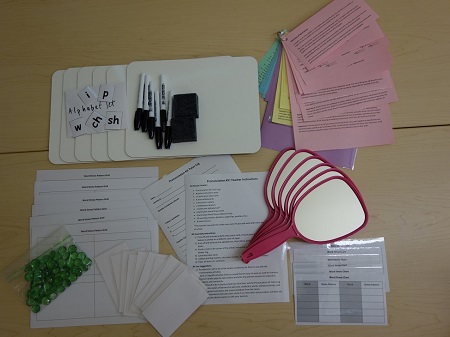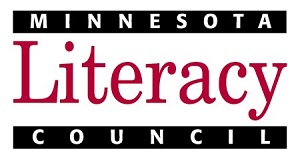- MN ABE Connect
- Archive
- Let’s Talk! Building Conversation into ESL Programming
 April 25, 2019
April 25, 2019
Let’s Talk! Building Conversation into ESL Programming
Andrea Echelberger, ESL Training CoordinatorConversation circles are a great way for programs to serve the immediate needs of adult ESL learners and generate more contact hours. Learners are hungry to build their everyday speaking and listening skills. Stronger conversation skills help learners to meet their neighbors, talk with co-workers and supervisors, ask questions of their children’s teacher, and feel more comfortable out in their communities.
Find information and resources about starting a conversation circle with your program.
 For teachers and programs that are looking to build more conversation activities into everyday programming, the Minnesota Literacy Council has developed a new Instructional Support Kit that focuses on listening and speaking skills. The Listening and Speaking Instructional Support Kit has over 20 activity ideas to help learners develop their communication abilities.
For teachers and programs that are looking to build more conversation activities into everyday programming, the Minnesota Literacy Council has developed a new Instructional Support Kit that focuses on listening and speaking skills. The Listening and Speaking Instructional Support Kit has over 20 activity ideas to help learners develop their communication abilities.
The activities can be used in low beginning to advanced level classes. Teachers can print off the kit, laminate the activity ideas and handouts, and then use the activity instructions to enhance their own curriculum, have volunteers do small group pull-outs or one-to-one tutoring, or leave lesson plans for subs. The kit is ideal for any program that is looking to start a conversation circle and needs activity suggestions for volunteers.
Check out these examples of fun conversation activities that can be adapted for any level and topic!
Dice Questions: Version 1
This activity provides learners with practice answering questions in a structured and supported manner, giving every learner in the group equal opportunity to speak.
Level: Literacy, Beginning, Intermediate, Advanced
Materials Needed: mini-whiteboard, whiteboard marker, dice
- Write the numbers one through six on the whiteboard, and write a different question behind each number.
- Go over the questions as a group, and model some example answers for each question. If the learners need additional support with answering the questions, write out model answers with blanks where the learners will insert their own response.
- Demonstrate rolling the dice, reading the question that responds to the number that you rolled out loud, and then answering the question.
- Pass the dice to a learner. They roll the dice, read the question out loud, then say their answer to the question.
- The dice goes around the circle until everyone has had a chance to roll the dice several times.
Beginning level example: questions about family
- Who lives with you?
- How many people in your family live in Minnesota?
- Where do the people in your family live? What countries?
- Do you have children? How old are they?
- What is a name that many people in your family have?
- How many cousins do you have?
Intermediate/advanced example: Show students an object or picture. Ask questions that require different levels of critical thinking. For an object, ask questions about it and for a picture of a person, ask questions with she or he.
- Describe: What does it/he/she look like, feel like, etc.
- Compare: What/how is something like or different from something else?
- Associate: What does it/he/she remind you of?
- Analyze (only if the topic is a thing): What parts does it have? What is it made of?
- Apply: What does it/he/she do? What might you use it for?
- Argue for or against: good, bad, why?
Dice Questions: Version 2
This activity provides learners with practice question formation and response, giving every learner in the group equal opportunity to speak.
Level: Beginning, Intermediate, Advanced
Materials Needed: mini-whiteboard, whiteboard marker, dice
- Write the numbers one through six on the whiteboard, and write a different question word behind each number.
Example:
1. What
2. Where
3. When
4. Who
5. Why
6. How many - Go over the question words as a group, and have the learners provide some example questions for each word
- Demonstrate rolling the dice and asking question that responds to the number that you rolled to the learner on your right
- The learner on your write answers your question, then takes the dice and rolls a new number. They ask a question that corresponds with the number that they rolled to the learner on their right
- The dice goes around the circle until everyone has had a chance to roll the dice several times.
Variation: For a single learner, take turns rolling the dice and asking each other questions. Tell them that they are not allowed to repeat questions.

Newsletter Signup
Get MN ABE Connect—the official source for ABE events, activities, and resources!
Sign UpArticle Categories
- ABE Foundations/Staff Onboarding
- ACES/Transitions
- Adult Career Pathways
- Assessment
- CCR Standards
- Citizenship
- COVID-19
- Cultural Competency
- Digital Literacy/Northstar
- Disabilities
- Distance Learning/Education
- ELA
- Equity/Inclusion
- ESL
- HSE/Adult Diploma
- Listening
- Math/Numeracy
- Mental Health
- Minnesota ABE
- One-Room Schoolhouse/Multilevel
- Professional Development
- Program Management
- Reading
- Remote Instruction
- Science
- Social Studies
- Speaking/Conversation
- Support Services
- Teaching Strategies
- Technology
- Uncategorized
- Volunteers/Tutors
- Writing